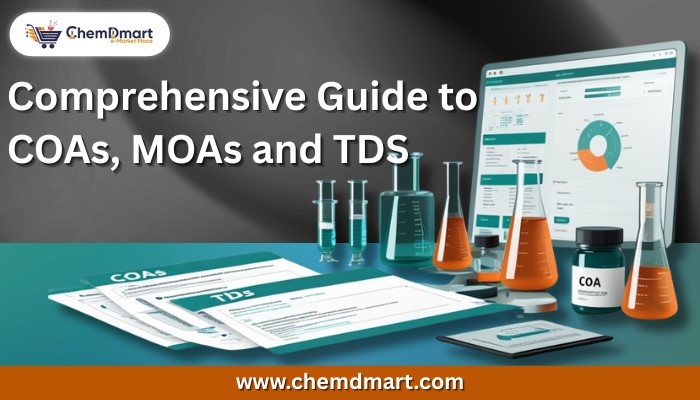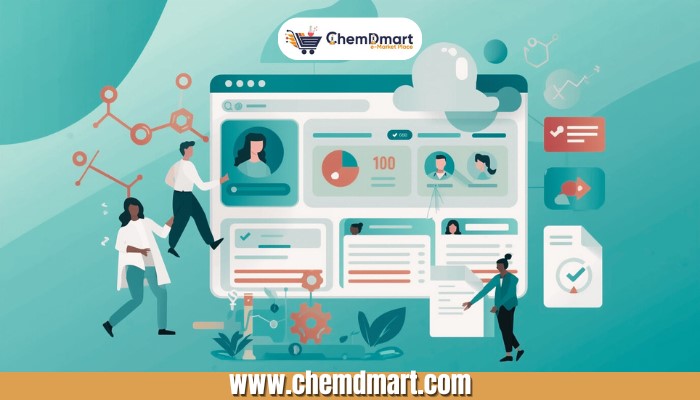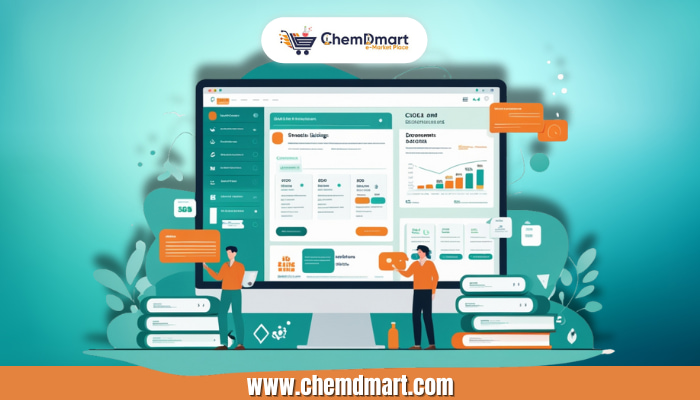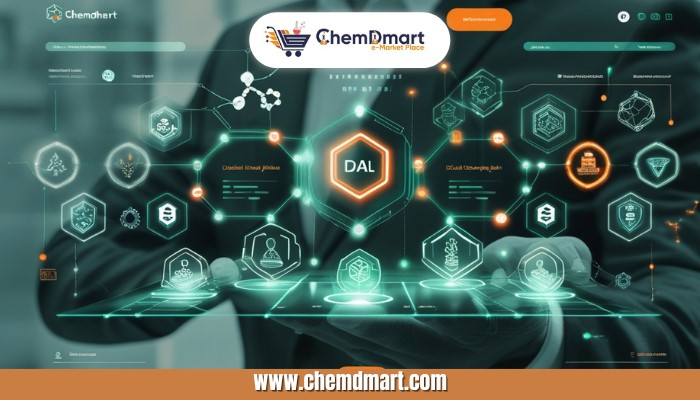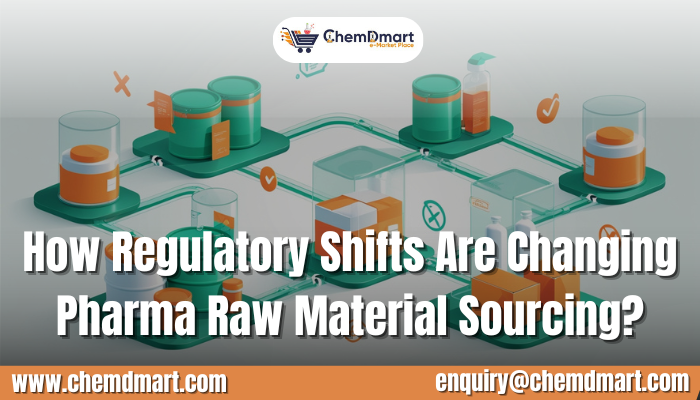Pharma sourcing is no longer just about finding the right supplier at the right price. Today, it’s about staying audit-ready in a world where regulations are tightening with every passing year.
GMP inspections, while CDSCO has ramped up enforcement in India. At the same time, data integrity and end-to-end traceability are no longer “nice to haves”, they’re non-negotiable. What used to pass as acceptable documentation is now a potential trigger for delays, import holds, or even outright rejections.
This changing regulatory landscape is forcing procurement teams to rethink their playbooks. Sourcing isn’t just a transactional step; it’s a strategic function that shapes compliance, timelines, and credibility. In this blog, we’ll break down the regulatory shifts that matter most, the challenges they bring for procurement teams.

Key Regulatory Shifts Impacting Pharmaceutical Raw Material Sourcing
Regulatory pressure is reshaping how procurement teams pick suppliers. Rules once seen as peripheral are now frontline sourcing criteria.
1. Stricter GMP and GDP Enforcement
Regulators have increased on-site scrutiny, including more unannounced overseas inspections. This raises the bar for foreign suppliers. Consequently, shipment holds and import refusals are more common when documentation or practices fall short.
What to do: require recent GMP audit reports and GDP proof during supplier pre-qualification. Make audits a gating item, not optional.
2. Data Integrity & Traceability Demands
Agencies now expect end-to-end batch traceability and robust data integrity controls. Traceability must allow quick recalls and root-cause analysis.
Suppliers are being asked for machine-readable records, lot histories, and audit trails rather than paper summaries. This is no longer future talk—it is operational reality.
What to do: Insist on lot-level provenance, electronic COAs, and a tested recall procedure as part of contracts.
Also Read: “Pharma ingredient sourcing mistakes that causes delays”
3. Rising Scrutiny on Excipients and Secondary Ingredients
Excipients are increasingly treated like APIs during inspections and evaluations. Regulators require focused risk assessments and dossier-level evidence for excipient safety.
Manufacturers must provide stability data, impurity profiles, and source controls for excipients, not just finished-product documentation.
What to do: Demand excipient-specific dossiers, DMF access, and supplier risk assessments up front.
4. Sustainability and ESG Regulations Entering Pharma
Environmental rules are moving from voluntary to mandatory in many markets. The EU’s green agenda is already imposing major costs on chemical producers. Buyers will be asked for supplier emissions data, supply-chain due diligence, and proof of responsible sourcing. Non-compliant suppliers risk market exclusion.
What to do: Include sustainability metrics in supplier scorecards and request emissions or ESG reports during qualification.
Regulatory changes are no longer incremental. They are systemic, and they change procurement workflows. Treat compliance as a sourcing pillar, and design supplier qualification processes around auditability, traceability, excipient dossiers, and sustainability data.
Challenges to Procurement Teams in Pharma Raw Material Sourcing
Compliance demands have stretched procurement timelines. What used to be a days-long check can now take weeks. Time adds cost and risk. Here are the key challenges in pharmaceutical raw materials sourcing due to shifts in the regulatory market:
- Longer onboarding cycles: Verifying GMP, DMFs, and audit reports slows supplier approval. Documents are requested, reviewed, and re-checked repeatedly. Plan for extra lead time and parallelize checks where possible.
- Supply shortages from lost certifications: Suppliers can be suspended or delisted after failed audits. Production lines stall when qualifying sources disappear overnight.
- Higher costs for compliant redundancy: Maintaining parallel, compliant supply chains raises inventory and management costs. Budgets must absorb resilience, not just price.
- Fragmented visibility on regulatory changes: Regulatory status updates are scattered across agencies and suppliers. Without a single source of truth, teams react slowly to rule changes.
Each challenge is solvable, but only when sourcing is treated as strategy, not admin. Build buffers, centralize documentation, and demand audit-ready suppliers to reduce surprises.
You might also like: “How to find the right API suppliers in India?”
How ChemDmart Helps Procurement Teams?
ChemDmart helps procurement teams adapt to regulatory change and complex sourcing demands. Its platform is built around a compliance-first philosophy that procurement teams can trust.
- Verified supplier ecosystem—ChemDmart lists suppliers who have passed pharma-grade checks and audits. This reduces qualification time and lowers onboarding risk.
- Centralized compliance documents—COAs, MSDS, DMFs, and audit summaries are stored on supplier pages. Documentation can be accessed for audits and regulatory reviews in minutes.
- Traceability by design—Lot-level provenance and shipment histories are linked to each product. When issues arise, the root cause is identified faster and recalls can be executed quickly.
- Transparent company profiles—product portfolios, manufacturing sites, revenue bands, and event participation are shown. Direct contact details and preferred procurement channels are also provided for rapid outreach.
- Integrated RFQs and quote comparison—tools help teams assess cost, lead time, and compliance side-by-side. Decisions are made faster, with documents and audit history immediately available.
For procurement leaders building a modern chemical sourcing strategy, ChemDmart reduces risk and accelerates supplier qualification.
Conclusion
Regulatory shifts aren’t background noise anymore—they’re rewriting the way pharma raw materials are sourced. Compliance isn’t a box to tick; it’s the baseline for survival in a market where one missing certificate or failed audit can stall entire pipelines.
That’s why procurement teams need partners and platforms designed for today’s rules, not yesterday’s shortcuts. ChemDmart brings verified suppliers, centralized compliance data, and built-in traceability so teams can move faster without cutting corners.
If your goal is to de-risk sourcing and stay audit-ready while keeping supply chains resilient, ChemDmart gives you the tools to make it happen. Instead of chasing paperwork and second-guessing suppliers, you can focus on what matters—getting safe, compliant products to market.
Start exploring ChemDmart, one of the biggest online B2B chemical marketplace and see how compliance can become your competitive edge.

